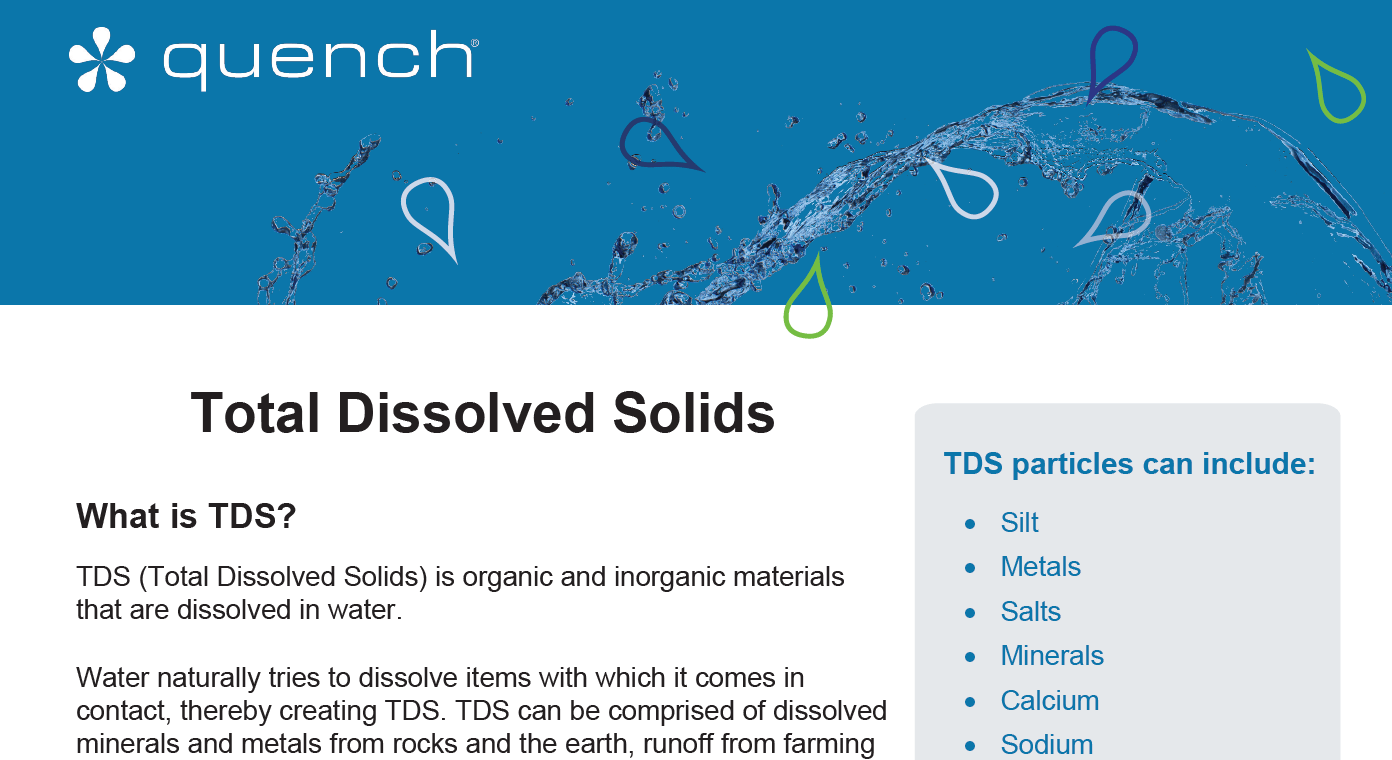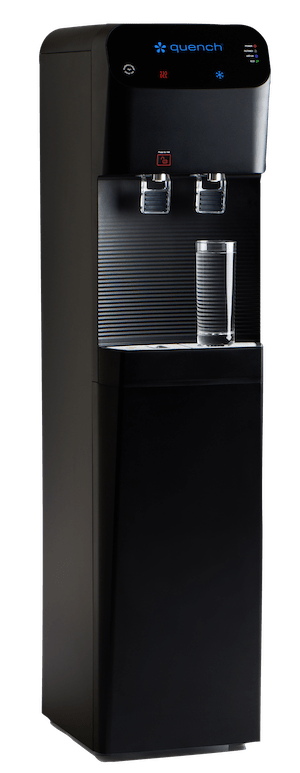What is TDS?
TDS is an acronym for Total Dissolved Solids.
What Are Total Dissolved Solids (TDS)
This term refers to the collection of substances contained within water, notably drinking water. TDS can be molecular or micro-granular in size and are comprised of both organic and inorganic matters. Organic matters found in drinking water may include, but are not limited to, algae, bacteria, pesticides, and disinfectants. Inorganic matters found in drinking water may include, but are not limited to, lead, arsenic, calcium, sodium, and chlorine.
What Are the TDS Standards?
TDS is most often measured in parts per million (ppm) or milligrams per liter of water (mg/L). The normal TDS level ranges from 50 ppm to 1,000 ppm. The United States has established water quality standards to account for safe levels of total dissolved solids, though these standards are not always adhered to because the Environmental Protection Agency (EPA), which is responsible for drinking water regulations in the United States, has identified TDS as a secondary standard, meaning that it is a voluntary guideline. High levels of TDS can create “off” tastes and odors in drinking water, and it can also have technical effects. Dissolved solids can produce hard water, which leaves deposits and films on fixtures and can corrode the insides of hot water pipes and boilers.
On top of these standards, Quench recommends reverse osmosis (RO) water filtration for water with TDS over 250 ppm (parts per million) and requires it for water with TDS over 300 ppm. RO typically reduces TDS to under 25 ppm; distillation reduces TDS to under 10 ppm. Bottled mineral water typically has a TDS level of approximately 400-650 ppm.
How Do You Measure TDS?
To test for total dissolved solids, you can use a TDS meter. A TDS meter is a small hand-held device used to indicate the total dissolved solids in drinking water. These small devices are used by novices and water experts alike to assess just how many particles are in your drinking water. It’s important to know that the test can be misleading or misinterpreted by those unfamiliar with how it works.
The TDS meter gives a quantitative measure of the number of dissolved ions in the drinking water but does not tell you the qualitative nature of the ion. Thus, a TDS meter cannot tell you specifically what minerals, contaminates, and sediments are in your drinking water; it can only tell you how much via parts per million (ppm). Because of this, a TDS meter cannot tell you whether your drinking water is healthy to drink. Therefore, the total dissolved solids test should only be used as an indicator, not sole factor, to determine the general quality of the drinking water.
Get Clean, Great-Tasting Water With quenchWATER+
quenchWATER+ is our Quench branded mineral-infused and electrolyte-enhanced water. It is purified on demand in our bottleless water coolers through our proprietary 5-filter setup. Our filtration process produces the cleanest water through our reverse osmosis (RO) filtration system. The RO system removes 99.9% of all contaminants and sediments in the drinking water, bringing the TDS level down to just about zero. The pure water passes over compressed minerals in our Mineral+ filter to add back a blend of calcium, magnesium, sodium, potassium, and other healthy minerals to create amazing tasting alkaline water.
Quench currently offers quenchWATER+ in our Q series machines, the Quench Q7 and Q5.
Download our TDS Information Sheet.

